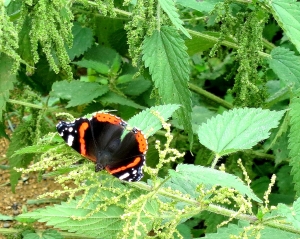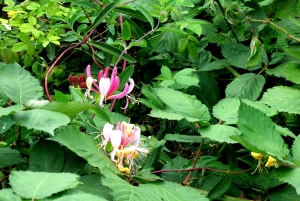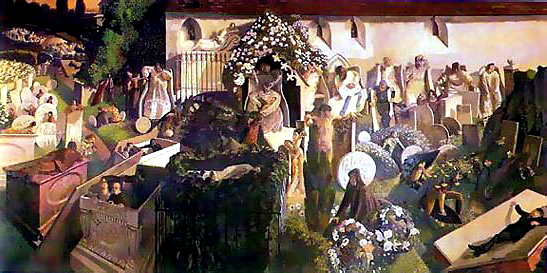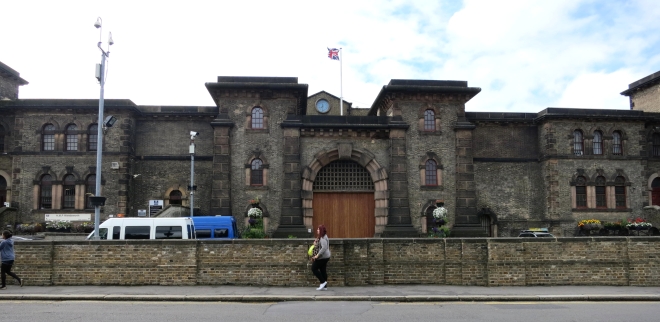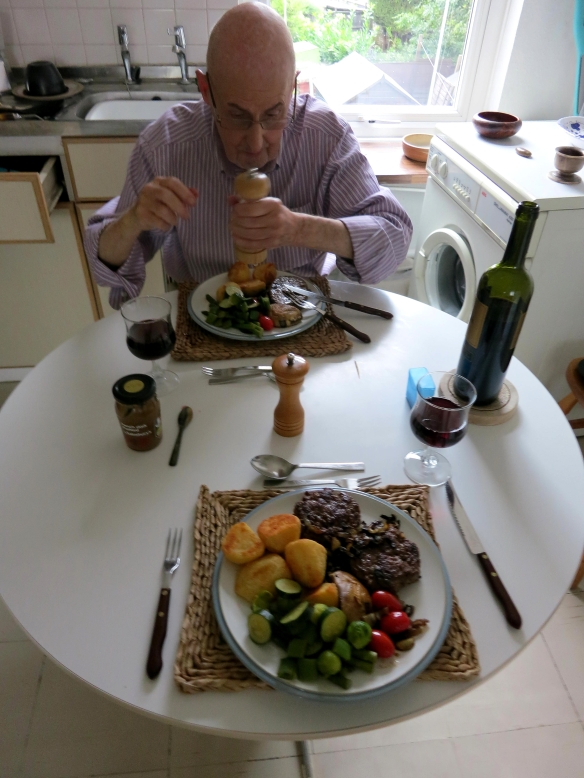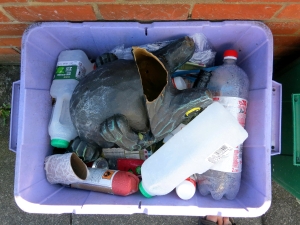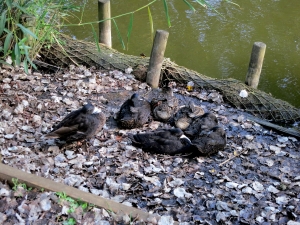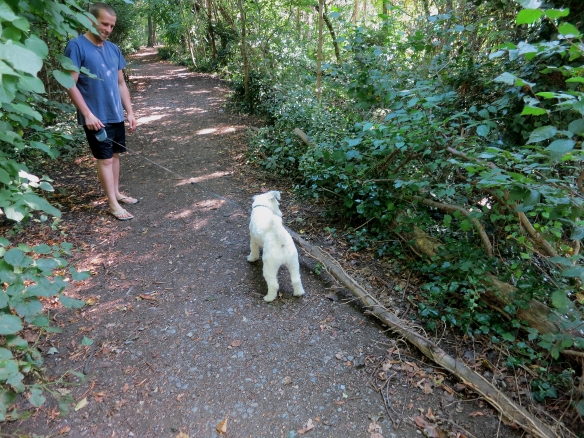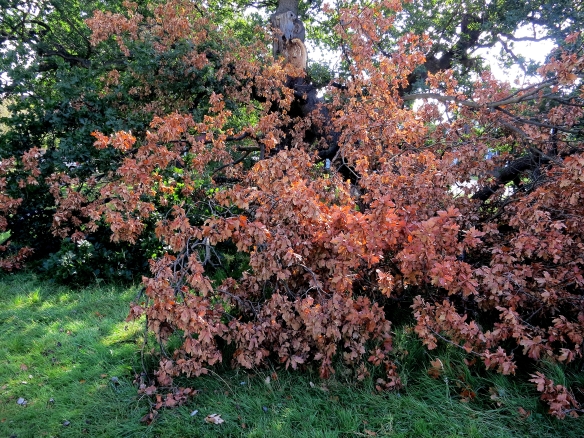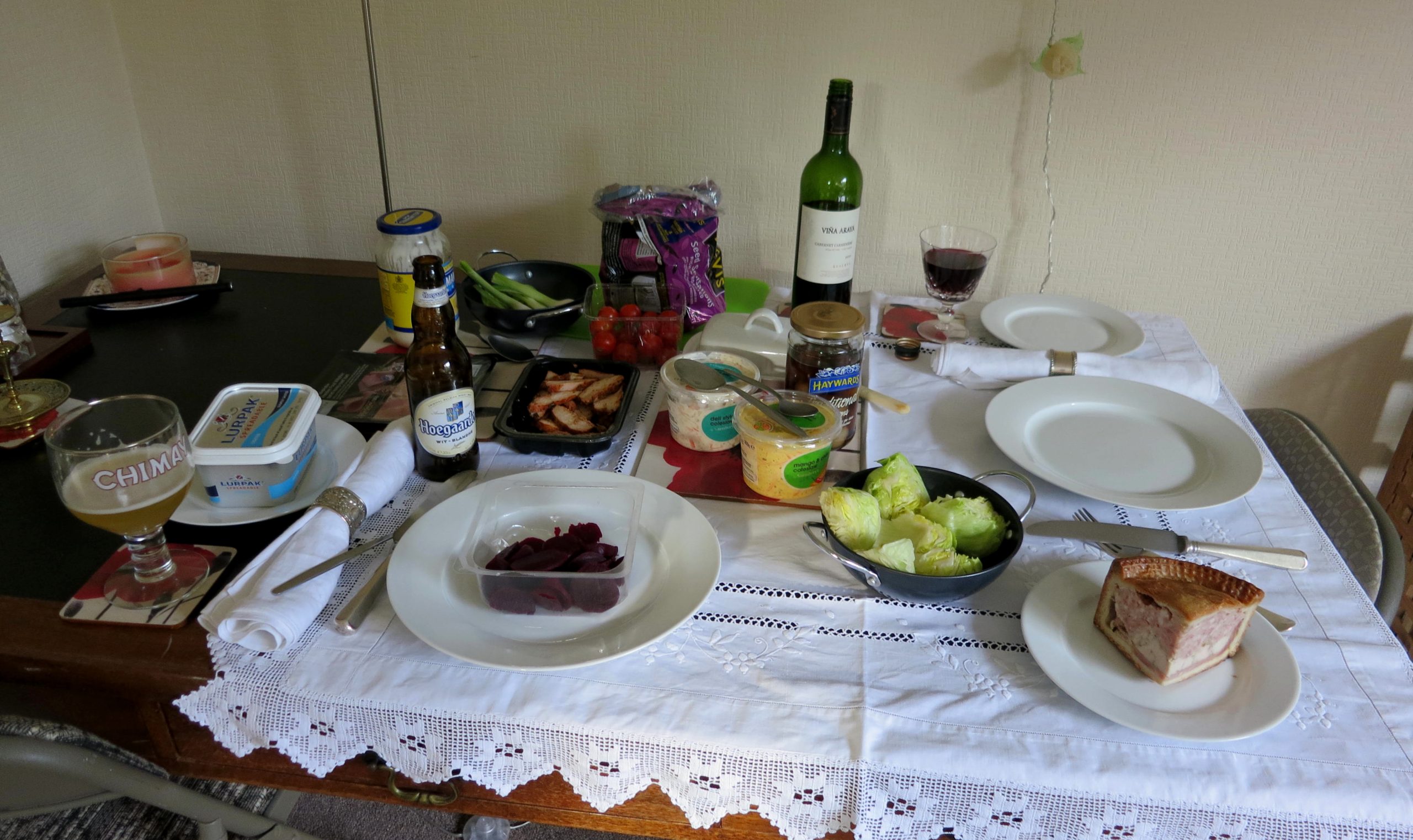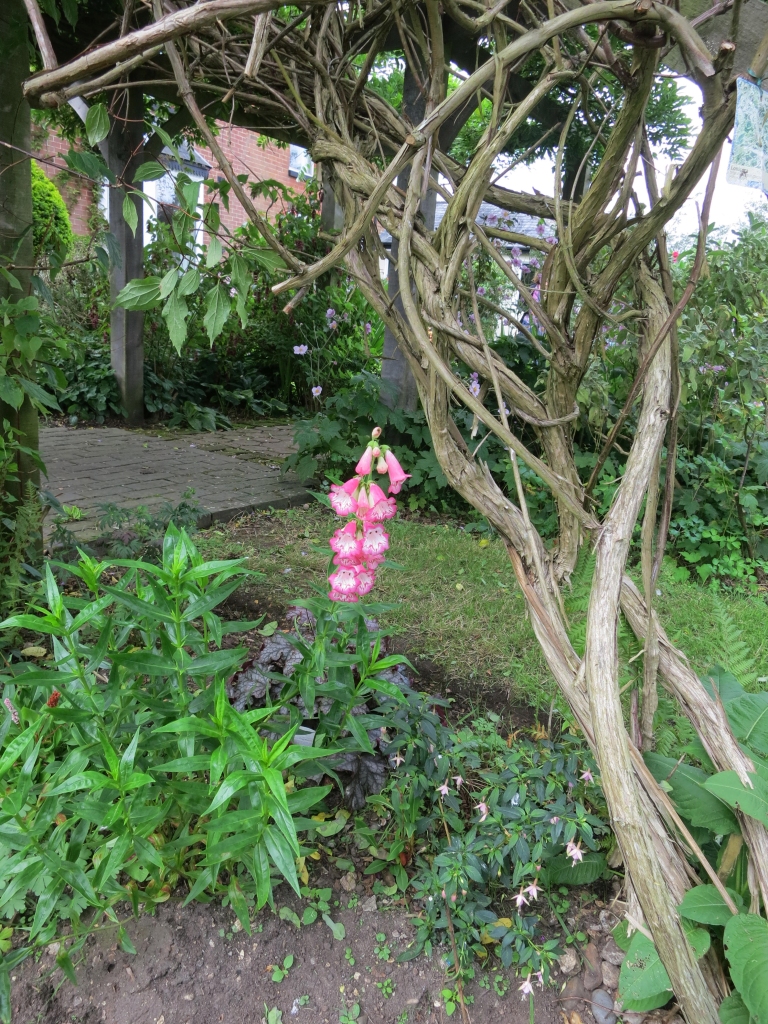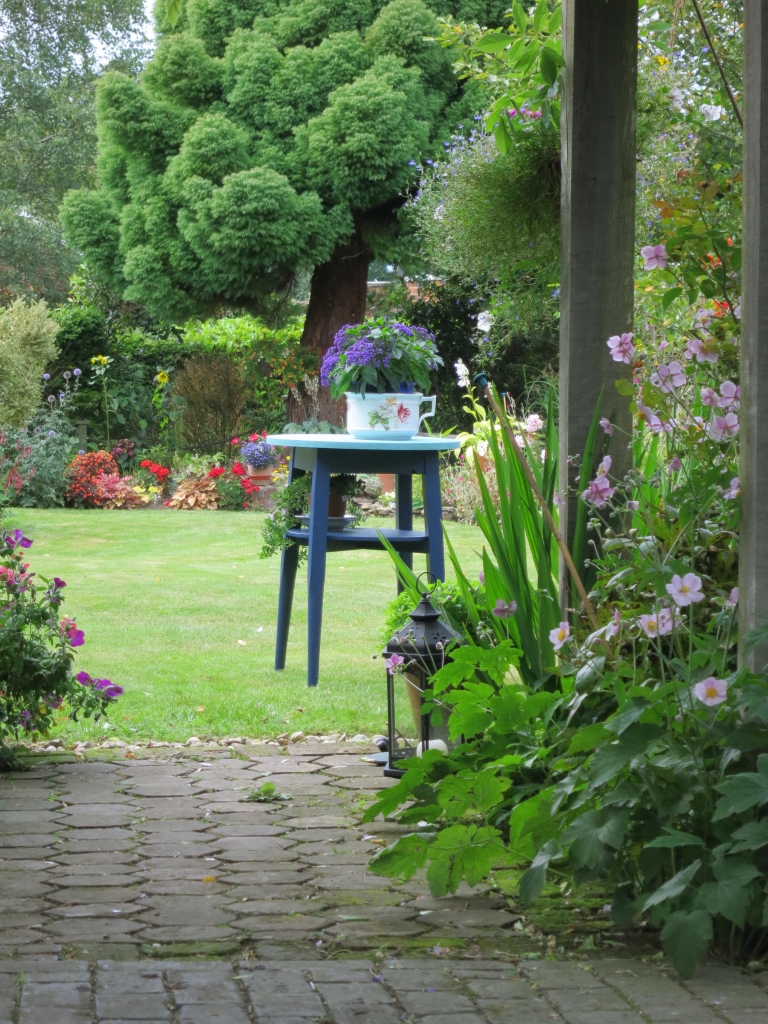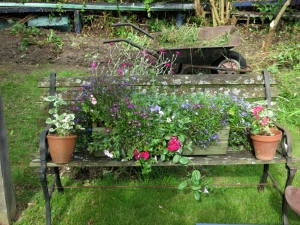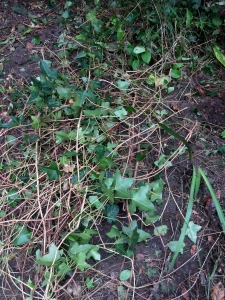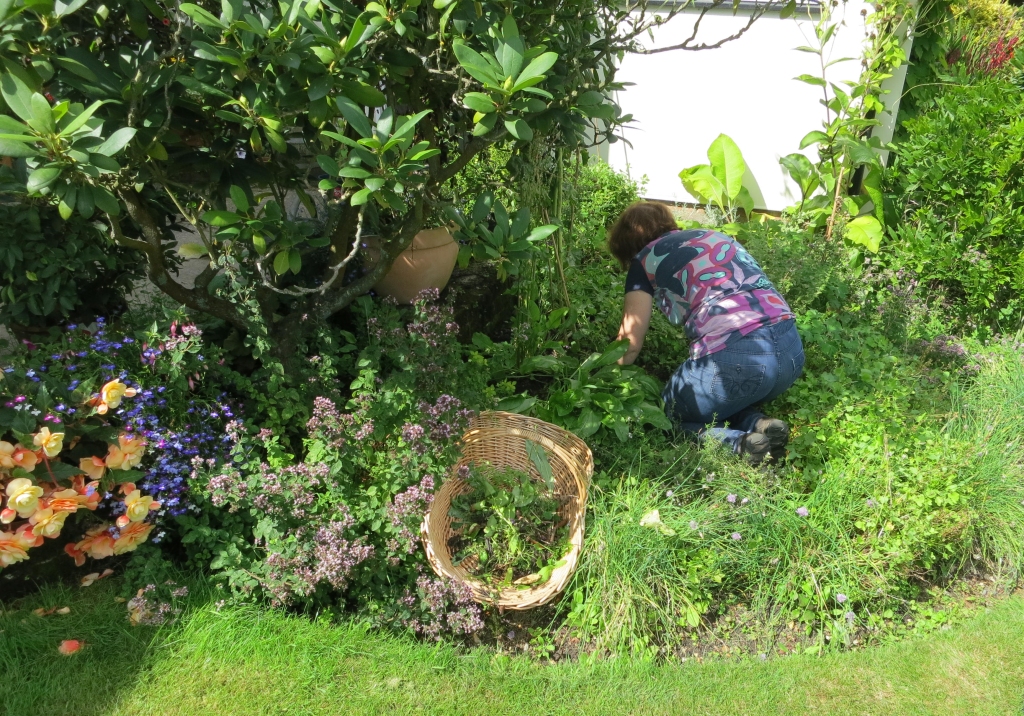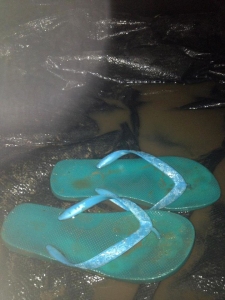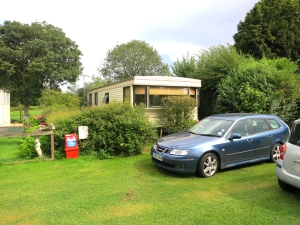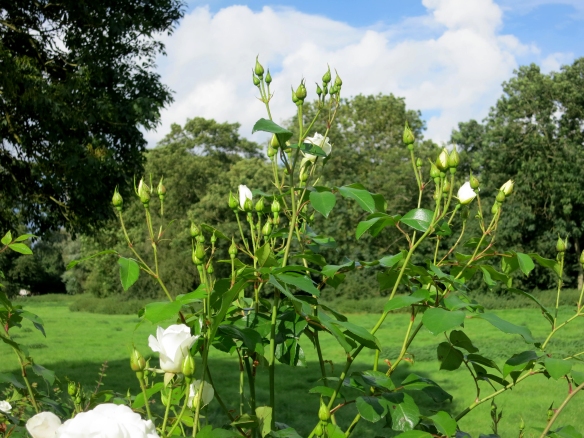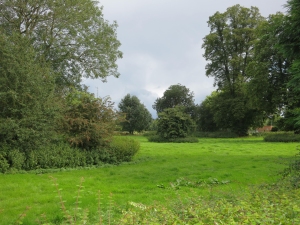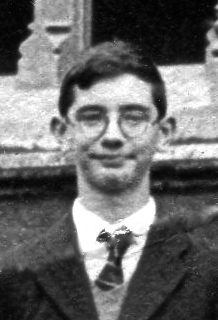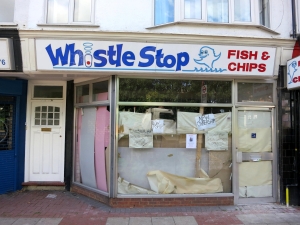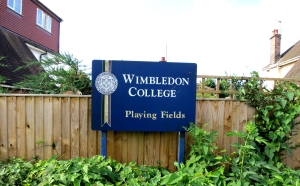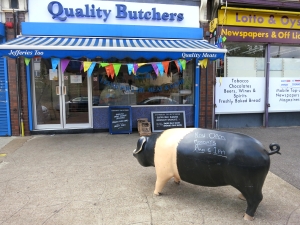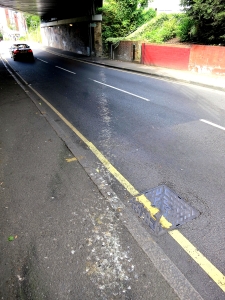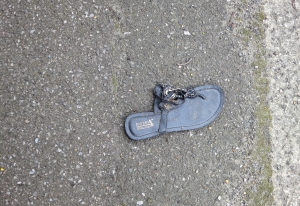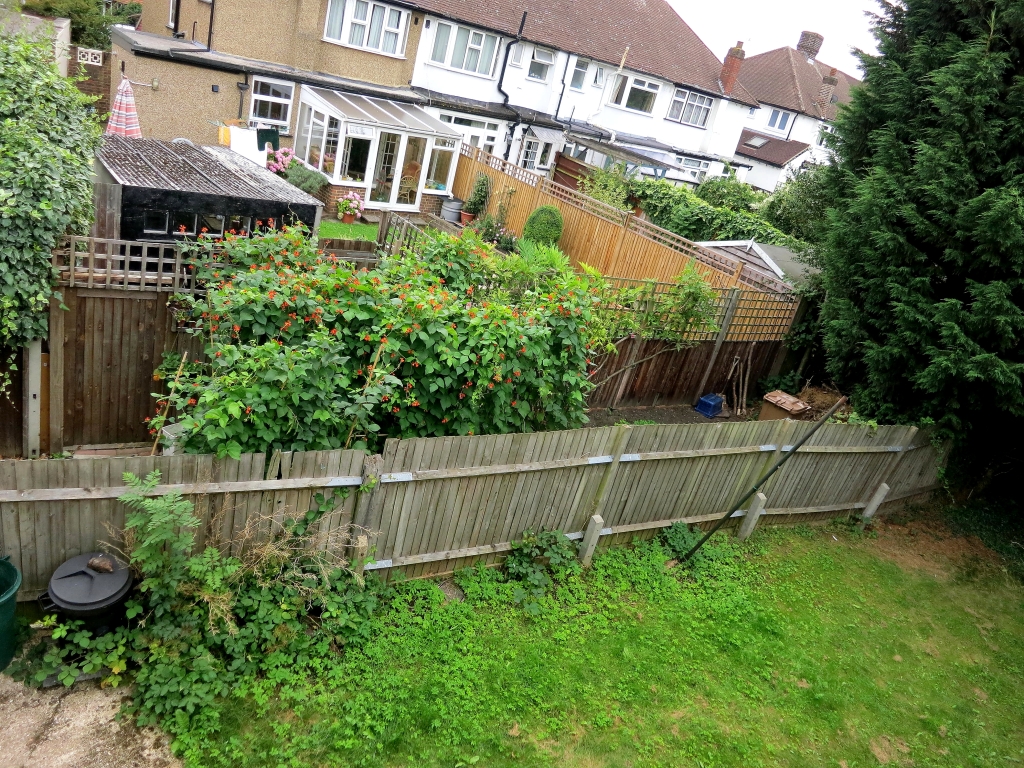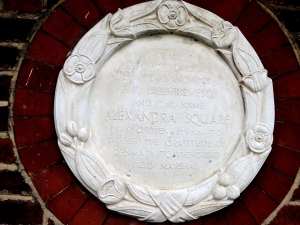This beautiful late summer day completely dispelled yesterday’s mood. With no particular goal in mind, I walked the length of Hillcross Avenue and into Lower Morden Lane. Turning right alongside the cemetery I took a footpath to Worcester Park, backtracked to another pointing to Trafalgar Avenue, which brought me into Cheam, and travelled left along the A24. I Slipped into Morden Park at the first opportunity and returned home to Links Avenue.
Whenever she drives along Hillcross Avenue, Jackie points out the confusion created by the speed limits in that road, which are constantly alternating between 20 and 30 mph. The changes are often obscured by trees.  The proud owner of a tree in Matthew’s (not!) favourite type of garden informed me that the features displayed are obtainable in any good garden centre.
The proud owner of a tree in Matthew’s (not!) favourite type of garden informed me that the features displayed are obtainable in any good garden centre.
The footpath runs alongside the Merton cemetery where Vivien (see 17th. July) is buried. I contemplated her grave, which I could see through the railings. In fact I had veered towards the cemetery, but realised I would be able to see what I wanted from the path.
Other footpaths are signposted along this main one, providing a veritable network linking numerous streets. At point 58 in the system, I was tempted to turn off and follow one. 
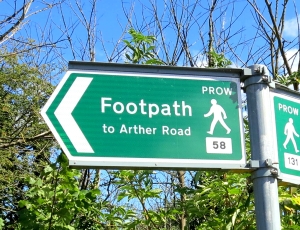 Being unable to choose between the two streets indicated on either side of this, I continued in a straight line. Turning round at Worcester Park, I retraced my steps and took the path to Trafalgar Avenue.
Being unable to choose between the two streets indicated on either side of this, I continued in a straight line. Turning round at Worcester Park, I retraced my steps and took the path to Trafalgar Avenue.
Accompanied by her mother, a ten-year old girl was leading a large horse. No doubt they had come from Green Lane Riding Stables which lie on the main path. The Trafalgar Avenue route is bounded on the right by a very long wall built of concrete slabs. This is completely covered in graffiti, sprayed with varying degrees of skill. A boy on a bike, dragging a panting Boxer dog behind him was being very impatient with his labouring and inquisitive pet. His cries of ‘leave it’ reminded me of my experience on 18th. June.
Trafalgar Avenue consists of a row of pleasant bungalows on the right, opposite a flowing stream alongside the screened backs of other houses. As always when in Cheam, I thought of Don (see posts of 1st. to 8th. August).
A wedding had taken place in the Registry Office in the park, in much more conducive circumstances than the one I wrote about on 29th. June.
The facility provided by the Great Outdoor Gym Company was being put to good use by a young man.  Waiting until he was taking a pause between circuits I conversed with him about the relative merits of the modern equipment and the barbells I had used in my twenties and again in my thirties and forties. He invited me to have a go on the bench press. I pleaded age and infirmity. In my twenties I had used the earlier YMCA building in Wimbledon. When Matthew and Becky were small and visited us in Soho, I would take them to the Jubilee Sports Hall in Covent Garden for them to have fun on the trampoline. Seeking an activity for myself, I chose to pick up weights again. The hall’s availabilty as a sporting venue was under threat, and, as part of the campaign to preserve it, a Chinese photographer produced a superb set of blown up illustrations which lined the entrance staircase. I featured in one, pushing up a bench press. Michael’s friend Eddie, was playing football in another. It was in this hall that I played my first game of Badminton. An ungainly pit-a-pat performance. I happened, rashly, to mention this to Carol Elstub, my deputy at the time. She told Ken Coleman, one of the Assistant Directors of Social Services. Ken, she said, played Badminton. She told Ken I played Badminton. She flattered me. A game was arranged. Ken turned out to be a Middlesex County Coach. Never mind, he taught me the game. We played regularly for some years. I would never beat him, but I did often manage to make him angry with himself. Our games took place in Queen’s Park Jubilee Hall, a short walk from my office. This particular venue is bound to be mentioned again.
Waiting until he was taking a pause between circuits I conversed with him about the relative merits of the modern equipment and the barbells I had used in my twenties and again in my thirties and forties. He invited me to have a go on the bench press. I pleaded age and infirmity. In my twenties I had used the earlier YMCA building in Wimbledon. When Matthew and Becky were small and visited us in Soho, I would take them to the Jubilee Sports Hall in Covent Garden for them to have fun on the trampoline. Seeking an activity for myself, I chose to pick up weights again. The hall’s availabilty as a sporting venue was under threat, and, as part of the campaign to preserve it, a Chinese photographer produced a superb set of blown up illustrations which lined the entrance staircase. I featured in one, pushing up a bench press. Michael’s friend Eddie, was playing football in another. It was in this hall that I played my first game of Badminton. An ungainly pit-a-pat performance. I happened, rashly, to mention this to Carol Elstub, my deputy at the time. She told Ken Coleman, one of the Assistant Directors of Social Services. Ken, she said, played Badminton. She told Ken I played Badminton. She flattered me. A game was arranged. Ken turned out to be a Middlesex County Coach. Never mind, he taught me the game. We played regularly for some years. I would never beat him, but I did often manage to make him angry with himself. Our games took place in Queen’s Park Jubilee Hall, a short walk from my office. This particular venue is bound to be mentioned again.
Illustrating his sparkling wit, Matthew tells a great story about his adult days in the gym. One of the other users, rather full of himself, proudly flexing his pecs, boasted: ‘look at these. Himalayas’. Quick as a flash, Mat crossed his forearms above his knees, one of which he grasped in each hand, and asked: ‘what are these’. His companion had no answer, so my son provided it. ‘Pyrenees’.
I made a sausage and bacon casserole for this evening’s meal. This was consumed with the aid of three glasses of Terres de Galets Cotes du Rhone 2011, bottle number 71041, in my case; and, you’ve guessed it, a glass of Hoegaarden in Jackie’s. The bacon was Sainsbury’s cooking bacon which we can thoroughly recommend. All other ingredients, including the vegetables, courtesy of the excellent Lidl’s. This store is, incidentally, introducing Polski Smaki, or the taste of Poland, from 6th. September. If anyone has any ideas of how to avoid continually dropping the nutmeg, whilst grating it, into the mashed potato, I would be pleased to hear from them.

